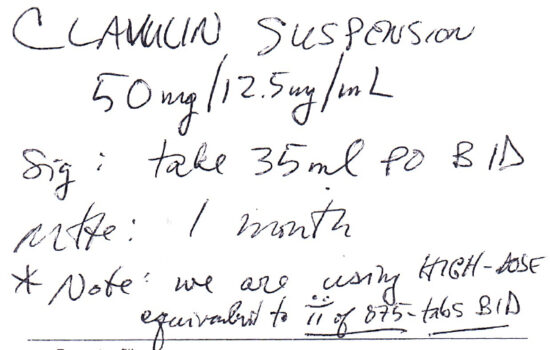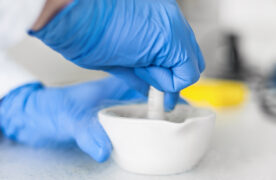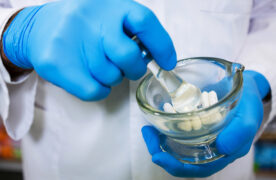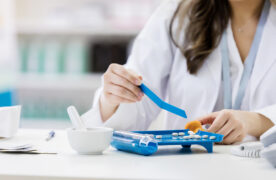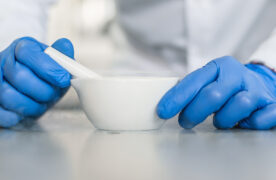By Ian Stewart R.Ph, B.Sc.Phm.
Exercise caution when dispensing combination drug products – especially those available in multiple combination ratios.
There has been an increase in the development and utilization of multiple drug combinations over the last two decades. Benefits may include synergy and increased efficacy, the simplification of drug therapy and increased compliance.
Such drug combinations are regularly used in the treatment of a variety of medical conditions including HIV (e.g. Truvada®), diabetes (e.g. Janumet®), hypertension (e.g. Coversyl Plus®) and infection (e.g. Clavulin®).
However, many combination drug products are available in multiple dose combinations. The dispensing of the incorrect dose combination is often a factor in the dispensing of an incorrect drug product and/or dose.
CASE:
The above prescription was given to a 51-year-old patient upon discharge from hospital. The prescription was taken to a local community pharmacy and was entered into the pharmacy computer and processed for Clavulin® suspension containing 50mg amoxicillin and 12.5mg clavulanic acid/ml in a 4:1 ratio as prescribed. That is, Clavulin® 250 oral suspension containing 250mg amoxicillin and 62.5mg clavulanic acid per five milliliters. Thirty-five milliliters as prescribed would provide 1750mg amoxicillin and 437.5mg clavulanic acid.
However, the prescriber also indicated that the intent was to prescribe the equivalent of two Clavulin® 875 tablets. Each tablet contains 875mg amoxicillin and 125mg of clavulanic acid in a ratio of 7:1. Hence, two tablets would provide 1750mg amoxicillin and only 250mg clavulanic acid versus 437.5mg clavulanic acid as prescribed.
Fortunately, the pharmacist identified the calculation and substitution error during patient counselling and hence the incorrect drug product was not provided to the patient. The pharmacist was aware that Clavulin® 400 oral suspension contained amoxicillin and clavulanic acid in a 7:1 ratio similar to Clavulin® 875 tablets.
The prescription was, therefore, changed to Clavulin® 400 oral suspension which contains 400mg amoxicillin and 57mg clavulanic acid per five milliliters. The patient was instructed to take 21.9mls per dose equivalent to 1752mg amoxicillin and 250mg clavulanic acid.
POSSIBLE CONTRIBUTING FACTORS:
- Availability of amoxicillin: clavulanic acid in multiple combination ratios. See Table 1.
- Prescriber calculation/substitution error.
RECOMMENDATIONS:
- Educate all pharmacy staff about the potential for error when dispensing combination drug products, especially those products available in multiple combination ratios.
- Note that Clavulin®-125F and Clavulin®-250F oral suspensions are stable under refrigeration for ten days after reconstitution. However, Clavulin®-200 and Clavulin®-400 oral suspensions must be used within seven days after reconstitution.
- Double check all calculations including those completed by the prescriber. Do not assume all calculations performed by other healthcare practitioners are always correct.
- Wherever possible, a second individual should independently complete the calculation without prior knowledge of the results of the first calculation.
TABLE 11
| Product | Content | Drug Ratio |
|---|---|---|
| Clavulin®-125F oral suspension | Each 5ml oral suspension contains 125 mg of amoxicillin as the trihydrate and 31.25 mg of clavulanic acid as the potassium salt | 4:1 |
| Clavulin®-250F oral suspension | Each 5ml oral suspension contains 250 mg of amoxicillin as the trihydrate and 62.5 mg of clavulanic acid as the potassium salt | 4:1 |
| Clavulin®-200 oral suspension | Each 5ml oral suspension contains 200 mg of amoxicillin as the trihydrate and 28.5 mg of clavulanic acid as the potassium salt | 7:1 |
| Clavulin®-400 oral suspension | Each 5ml oral suspension contains 400 mg of amoxicillin as the trihydrate and 57 mg of clavulanic acid as the potassium salt | 7:1 |
| Clavulin®-250 tablets | Each tablet contains 250 mg amoxicillin as the trihydrate and 125mg of clavulanic acid as the potassium salt | 2:1 |
| Clavulin®-500F tablets | Each tablet contains 500 mg amoxicillin as the trihydrate and 125 mg of clavulanic acid as the potassium salt | 4:1 |
| Clavulin®-875 tablets | Each tablet contains 875 mg amoxicillin as the trihydrate and 125 mg of clavulanic acid as the potassium salt | 7:1 |
Please continue to send reports of medication errors in confidence to Ian Stewart at: ian.stewart2@rogers.com. Please ensure that all identifying information (e.g. patient name, pharmacy name, healthcare provider name, etc.) are removed before submitting.
REFERENCES
1. Clavulin [product monograph]. GlaxoSmithKline Inc. Mississauga, Ontario; 2018


